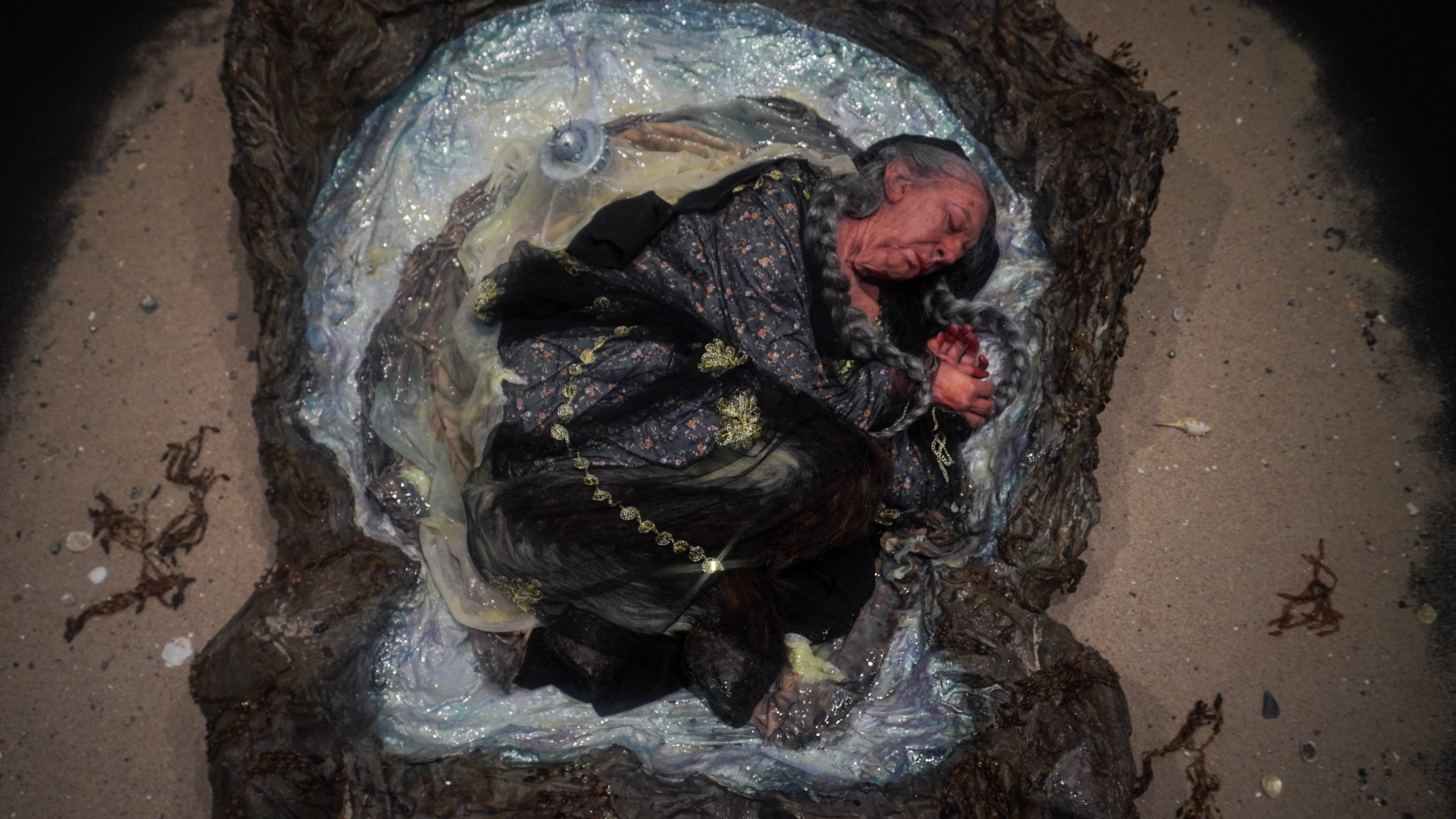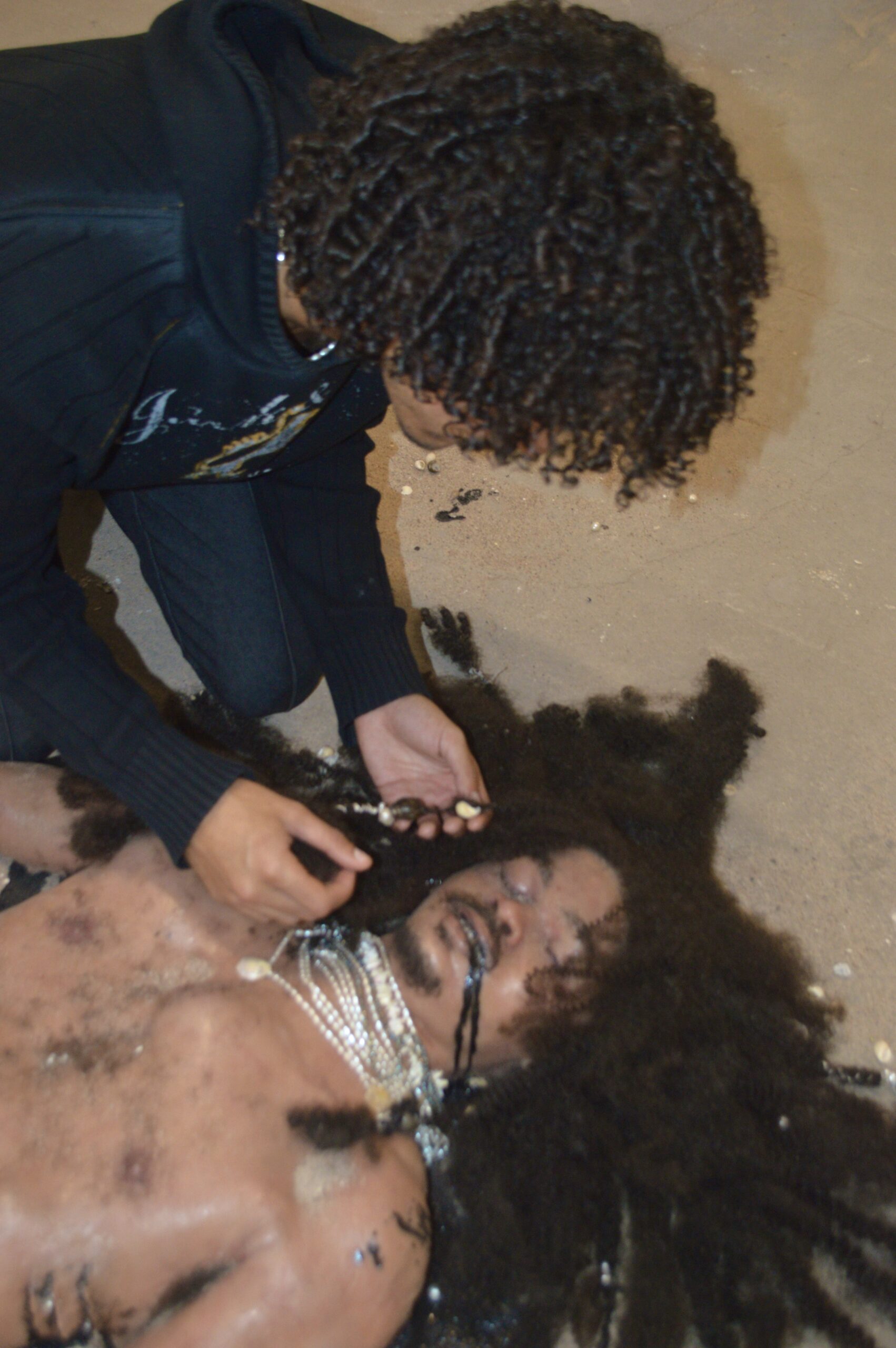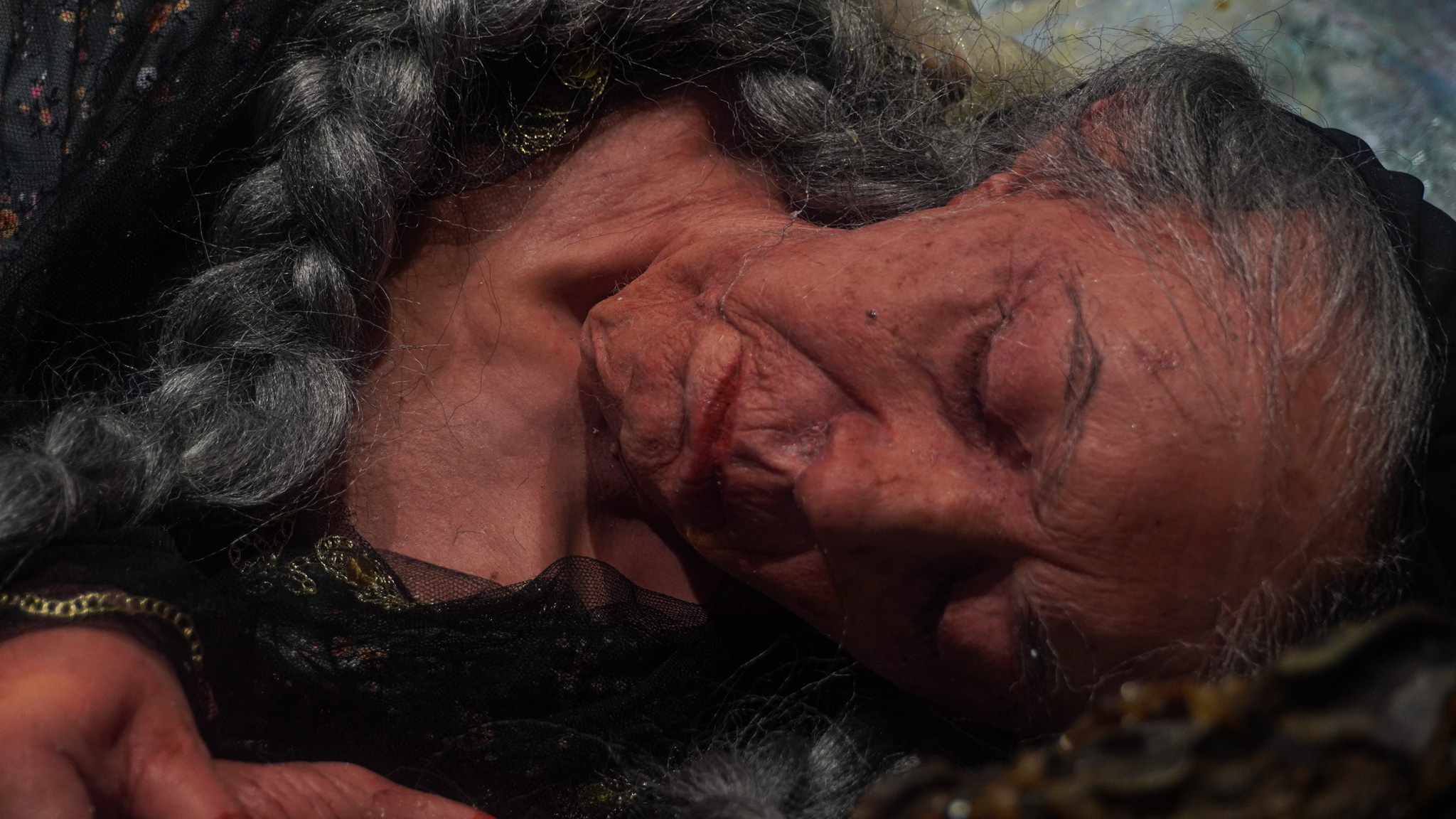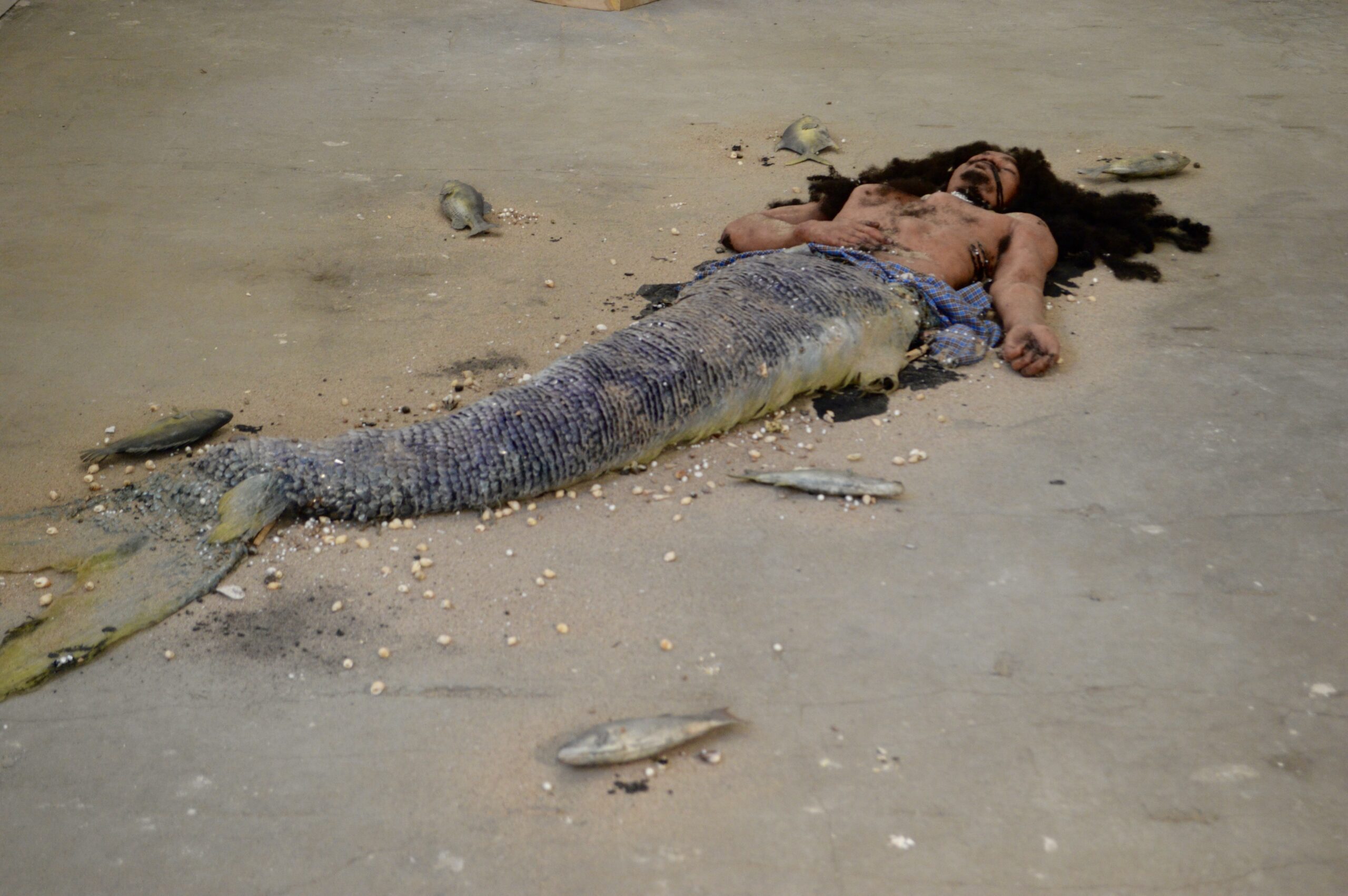News
It’s no quotidian matter to encounter Khaleeji artists—especially those in the region—who engage with hyperrealistic artwork, particularly given that creating eerily lifelike artwork is often frowned upon in specific cultural and religious contexts. But the discomfort elicited by Jasem Alsanae’s work transcends its residence in the uncanny valley. The 22-year-old Kuwaiti artist, currently attending the Rhode Island School of Design (RISD), creates these Khaleeji mythology-inspired sculptures as commentary on topics such as Kuwait’s post-war trauma and social taboos.
Within most Arab and North African societies, folklore and mythical stories are often shared as parables for children. While these tales are still passed orally between generations, Alsanae feels that the richness of the region’s mythological history is gradually disappearing ever since the socioeconomic shift to the oil-based industry that the Khaleej is known for. “Folklore and myths are very telling of how the society that created them functioned: what they feared, what they prioritised. I love thinking about how these stories came to be and for what reason. Mythology gives me context to the lives of our ancestors and the stories lost; more importantly, context to where our society was versus where it’s heading,” expresses Alsanae.
“What we nowadays take as ‘facts’ or ‘history’ are usually one-sided accounts of those at the top of the social hierarchies. Community stories, oral stories, are a more collective opinion; therefore, I have more faith in their truth, and for that reason, I believe preserving them is essential.”
For Alsanae, these mythological beings are intertwined with the land and people they originate from. He often contemplates the impact of traumatic histories on these figures, such as the water Djinns in the Arabian Gulf, wondering how they might navigate the aftermath of oil spills. Similarly, he reflects on Hmarat Al-Gaylah, a creature from Khaleeji mythology, wandering a desert littered with landmines—was she trapped, tortured, or died with the memories of martyrs?

Mixing folklore with themes of regional economic shifts, political unrest, and social censorship fuels his artworks. He reflects on collective traumas and histories often ignored within his community and the painful memories that linger unspoken, buried for the solace of citizens. While he aims for a safe space that fosters recognition and discussion of these heavy subjects, he is careful not to reawaken any trauma inadvertently but instead have it “rest out in the open.”
Alsanea was the only person in the family who didn’t experience Saddam’s invasion of Kuwait. Still, he did encounter the aftermath of it all and bore witness to everyone else’s experience without any form of recovery or glimpses of an honest dialogue. “People are left to deal with their demolished lands, stolen freedoms and tortured lovers however they can. A lot of people are isolated in their struggles. I also believe what’s left untreated generates generational trauma. What infuriated me even more was the lack of education on this large part of – very recent – Kuwaiti history in our school system,” stresses Alsanea. “Parents are too wounded to talk to their children about what they lived through, and schools are actively erasing that history. Art has become my way of creating that avenue to help generate these conversations, these feelings, these moments of grief.”

It’s well-known that Arabs are notably private and proud individuals, fostering an environment that rarely engages with social criticism. Understanding complex subjects becomes easier when viewed from the perspective of another culture, as it creates a sense of detachment. This detachment makes these subjects seem “less real” and more like abstract concepts that may not fit within personal cultural boundaries. “My use of mythology or things that are ‘uncanny’ or ‘fictional’ creates a sense of detachment in the audience’s reflection of the work that can help them digest the concepts,” explains Alsanea. “I see realism as layers of transparency; some parts of my sculptures are real and of this world – like the shells and pearls; some are fabricated to look real, like the human figures, or oil; and others are meant to allude to something recognisable; like the fish toys or beaded seaweed. All these layers act as shields that allow me to navigate creative expression of sensitive topics.”
In social theory, the burden of representation examines how societies or individuals grapple with the desire to address internal issues while fearing misrepresentation. That fear revolves around the potential exploitation and weaponisation of their community’s vulnerabilities by privileged, often white, groups. Whether or not this theory is entirely applicable to the society in which Alsanea was brought up, he acknowledges how this could have been a subconscious influence exerted on social issues in Kuwaiti society.
As he is now based in the States, Alsanea has noticed how he discusses his work differently than in his hometown, considering a more stern interpretation. If anything, he aims to provoke understanding and reflection among American viewers about their nation’s implicit and explicit involvement in such conflicts and their consequences. Alsanea critiques the cycle of weapons manufactured in the West, sent to the Middle East to kill civilians, followed by American troops arriving to “liberate” the region. He explicitly wants his American audience to consider how their tax dollars fund wars and genocides in the Middle East and come to terms with who’s at the cause and effect of the violence.

That said, on an academic note, Alsanea often has to navigate and critique educational environments that do not fully grasp his work’s cultural or conceptual contexts. He feels he mainly receives feedback that focuses heavily on technical skills rather than the deeper thematic or conceptual elements he intends to convey. “I think I would benefit the most if there were an art institute in Kuwait that I could go to with well-established professors. I don’t know. That always seemed like the answer because I also felt it would be unfair of me to travel all the way to the US and ask US-based professors to understand my work,” reflects Alsanea. “Towards the end, I started meeting my professors early on with one-on-one [meetings] and giving them the backstories of what I work with and how I work with it, letting them digest that, and then meeting with them later on so that they have built-in feedback. But it’s also not my role to educate them. So it’s bittersweet.”
When asked where he sees his work residing, his response is always The Khaleej, as he says, “That is their home.” Many creatives, especially those from the Middle East, often struggle with the subconscious thought that foreign work is superior or that being established abroad is “better.” But there’s power with artists like Alsanea who want to create artwork that speaks to the audience they contemplate upon. Whether or not someone from abroad wants to see and learn about it is a personal choice. Should he “displace” his artwork and present it to a Western audience, he acknowledged his responsibility to emphasise the role of the West in the subjects of his work. While many artists leave their work open to interpretation, Alsanae believes that good art should allow the audience’s imagination to flourish while maintaining a certain level of objectivity that holds purpose by documenting history, sustaining hope, educating, and provoking thought.

But on a cheekier note and beneath his profound contemplations and regard for his audience, Alsanae delights in provoking discomfort, especially among those who scorn his work. As he talks about it, a smirk curls around his mouth. He might even suggest that his art is a “ritual” or any phrase of similar negative connotations to elicit reactions. This penchant for unsettling his audience has been with him since childhood. During a show and tell in kindergarten, his mother introduced him as Winnie the Witch, a character from his favourite book. Draped in an oversized witch costume, complete with a burgundy wig, tall black hat, and matching cape, Alsanae stood proudly before his classmates. But the spell was broken when one of his classmates exclaimed, “That’s Jasem?!”—a moment that constantly instigated his desire to challenge perceptions.
“That memory was so haunting that it’s now the clearest memory from childhood I can recall. I found myself obsessively dressing up as a witch every chance I’d get. I’d challenge myself to be more and more convincing,” recalls Alsanae. “By age 9, I’d begin teaching myself special effects makeup, and by 12, I’d make my own witch prosthetics and go to school to scare my teachers. It was so convincing that I gave my fifth-grade Arabic teacher a panic attack. Realising my work can evoke those reactions from people was something powerful.”
As he indulges in these small delights, his artistic fascination ultimately lies in being a catalyst for conversations about unspoken experiences often neglected under the guise of taboo. “I think if we were all honest with ourselves and come to terms with our own truths, we could relate on the basis of humanity and find ultimate freedom. Shame causes some to internalise and feel lonely, or internalise and project, or internalise and run for parliament and make it everyone else’s problem too.”
Words: Rand Al-Hadethi